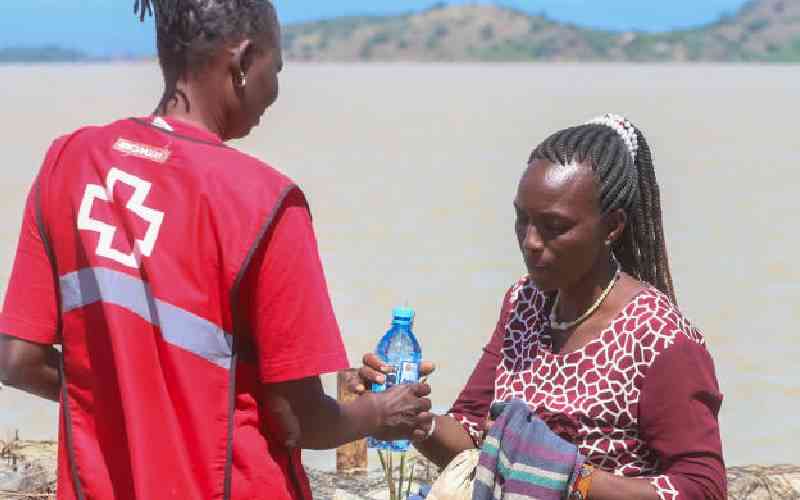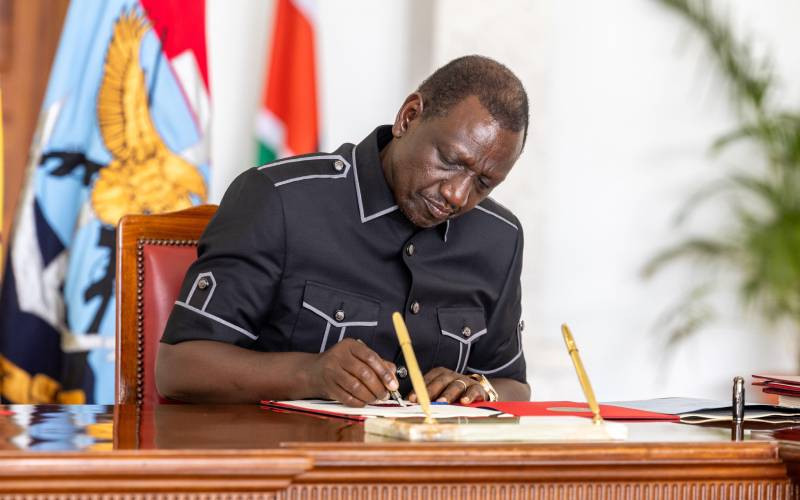Kenya: Groups of youths have turned against American funded anti-radicalisation initiatives set up to win their hearts and minds, according to an audit report.
An audit of the US-funded Kenya Transition Initiative (KTI) that has been running in Eastleigh, Garissa, Lamu, Kilifi, Kwale, Malindi and Mombasa now recommends a new approach if the initiative is to work.
Among the recommendations is that the initiatives should stop using the USAid logo because it is stirring violent reactions against project workers.
The report tells of a case where some youths distributed leaflets denouncing US-funded activities in one area, and threatened staff members. “Donors, and especially the US, should be cautious with branding and allow projects to operate without the USAid logo for safety concerns.”
Revenge attacks
The hostility against American targets may partially explain the dramatic increase of violent attacks in Eastleigh and parts of Mombasa in 2013 and early this year.
The shortened version of the audit, carried out by independent consultants James Khalil from the UK and Martine Zeuthen of Nairobi, was published last week in the International Journal of Security and Development.
But the intimate details of the team’s findings, and which are indicated to be of serious security nature, may never be known to the Kenyan public. A censored version of the final report, the duo says, will shortly be available on the USAid website.
“But given the current insecurity in Kenya, the projects’ personnel have not been named in either the final report or in this one, and it has been necessary to leave a number of opinions uncited on this basis.”
It also detailed how Kenyans associated with the American initiatives may be putting their lives in danger. Those who use the American logos may encourage recruiters to justify this branding as evidence of external “meddling” and justify revenge attacks, the report said.
A mid-term evaluation of the projects had been carried out in 2012 by USAid, which covered 1,500 Somali youths in Eastleigh, Garissa and Hargeisa in Kenya and Bosaso and Mogadishu in Somali.
The evaluation report, published last year and available on the Internet, displays a frustrated America, where enumerators and project managers were telling of youth turning their backs against violence, yet at the same time the frequency of attacks were heading to an all-time high.
That report, whose data had been collected by IPSOS Synovate-Kenya, concluded that despite participating youth verbally denouncing violence to evaluators, this was not reflected in their actions. “As the positive results from Eastleigh and Garissa were being confirmed through the fieldwork in
late 2012, the evaluators watched as those communities suffered terrorist attacks on a more than weekly basis,” said the mid-tern evaluation report.
The Kenyan and US governments reacted differently to this increased violence with serious repercussions to the country. The Ministry of Interior introduced the now infamous Usalama Watch, attracting more hostility from the Somali and Muslim communities.
Stay informed. Subscribe to our newsletter
On the other hand, the US and UK governments issued travel advisories which have largely helped bring the tourism sector to its knees. KTI has been going on since 2011 to address what was thought were the main factors driving Somali youth into extremism.
The KTI initiative involves the US through USAid providing money to train selected youths in what the authors call livelihood training, cultural events, community debates on sensitive topics, and counselling for post-traumatic stress disorder.
Violent groups
The new report leaves little doubt that the American ‘generosity’ is not winning many hearts and suggests a rethink of the concept.
It blames this failure on the basic assumption that the youth joined violent groups mainly because of a feeling of communal exclusion and poverty. The audit findings and the unfolding development in Iraq and Syria, where about 3,000 nationals from US and some rich European countries have joined jihadists, are bound to undermine such thinking.
Khalil and his colleague say more basic and personnel reasons could be driving Kenyan youths into the hands of the jihadists. This includes what the duo says is an Al Shabaab’s monthly salary of $50–$150 (about Sh12,500) for recruits.
There is, the consultants say, personal prestige associated with walking in the streets with a gun as a member of Al Shabaab which ensures everybody feared and respected you and that “girls also liked you”.
While (Interior Minister Joseph) Ole Lenku’s Usalama Watch received strong local and international condemnation for what was seen as ethnic and religious profiling, the KTI has so far escaped this. The programme focus, the audit says, was upon specific coastal regions and Eastleigh’s environs, rather than Kenya in its entirety, as these locations were deemed to be highly susceptible.
It is also said to lay more emphasis on the Somali youth, which the authors said was a misguided approach and need to be relooked into.
“While it is not possible to provide additional details given the sensitive nature of this programming, put simply, those individuals most likely to follow the extremism path were seemingly less likely to attend the American sponsored events,” concludes the report.
 The Standard Group Plc is a
multi-media organization with investments in media platforms spanning newspaper
print operations, television, radio broadcasting, digital and online services. The
Standard Group is recognized as a leading multi-media house in Kenya with a key
influence in matters of national and international interest.
The Standard Group Plc is a
multi-media organization with investments in media platforms spanning newspaper
print operations, television, radio broadcasting, digital and online services. The
Standard Group is recognized as a leading multi-media house in Kenya with a key
influence in matters of national and international interest.
 The Standard Group Plc is a
multi-media organization with investments in media platforms spanning newspaper
print operations, television, radio broadcasting, digital and online services. The
Standard Group is recognized as a leading multi-media house in Kenya with a key
influence in matters of national and international interest.
The Standard Group Plc is a
multi-media organization with investments in media platforms spanning newspaper
print operations, television, radio broadcasting, digital and online services. The
Standard Group is recognized as a leading multi-media house in Kenya with a key
influence in matters of national and international interest.







